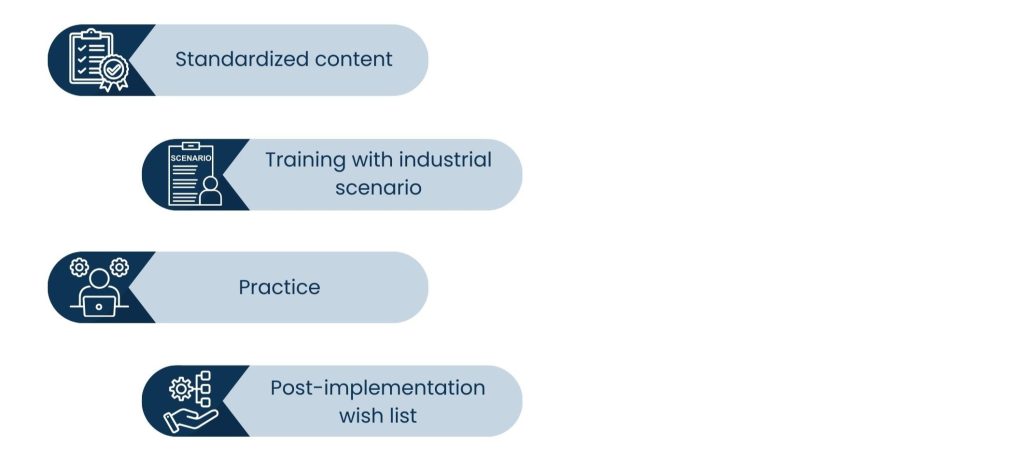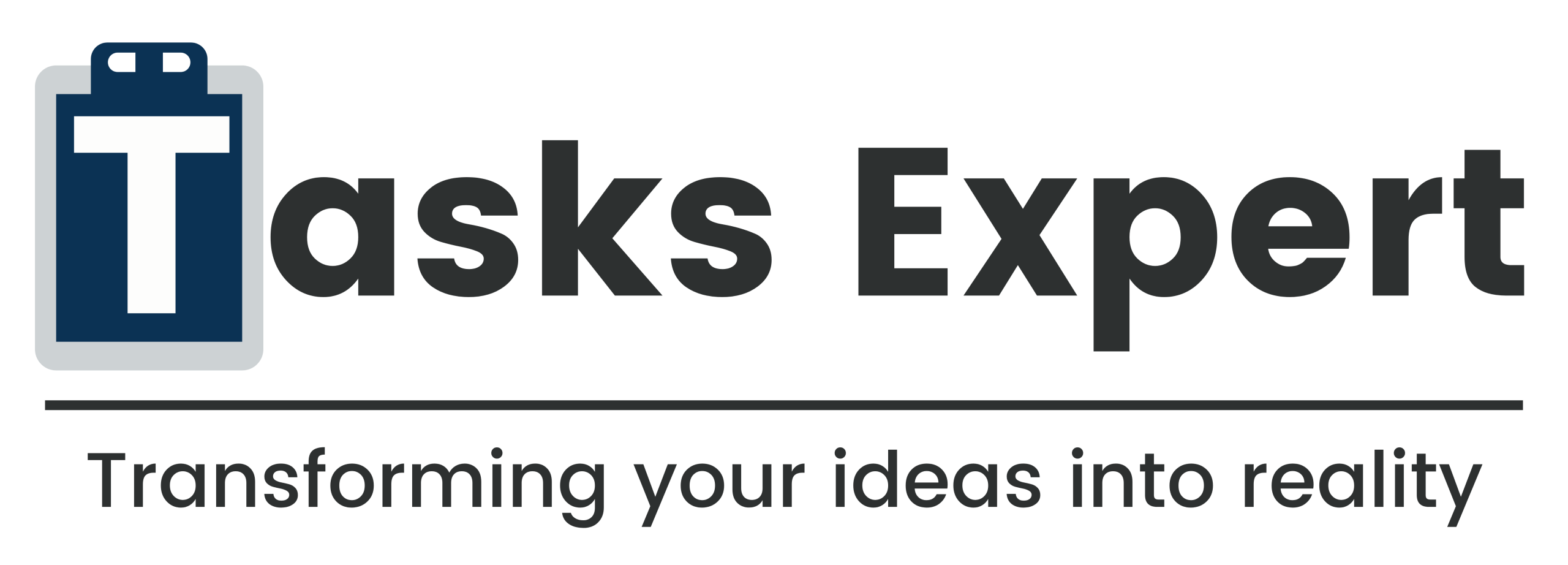Introduction
No matter whether you are launching a new CRM in retail, an ERP system in manufacturing, or the compliance software in Healthcare, they all fail to leave any long-lasting impact. First and foremost, each industry is inherently tied to respective workflows, compliance standards, and operational challenges. This is why the industry-focused software implementation services make a difference.
Rather than imposing a “one-size-fits-all” model onto your organization, these services align with the language, values, and day-to-day realities of your sector. It leads to quicker deployment and improved employee engagement, but also decreases the ROI.
From custom onboarding and industry integrations to compliance workflows, these specialized services enable the implementation of the new software as an integral part of daily work. Through this, they bring together the technical deployment and practical adoption, making sure that the transition does not seem like a disruption but a new version.
The conference was a part of my industry-specific implementation plan: In this post, we will discuss the approach for industry-specific functionalities in more detail and elaborate on how implementation happens differently, which significantly affects the adoption rate and further success.
Software Implementation Services is more About Understanding Industry-Specific Software
All industries have unique workflows, compliance mandates, and user behaviours. The nature of your business, if you are a retail store using point-of-sale systems, is different from a healthcare provider implementing an EHR solution. Therefore, industry-specific software implementation services improve the adoption rate. A rollout that is generic can miss key features or configurations that benefit the end user the most.

To guarantee that your practice is ultimately best aligned to trump the others, do these right things:
- Assess industry-specific needs: Understand how your sector works, including procedural bottlenecks, regulatory constraints and operational everyday realities
- Map your basics before configuration: Mold the software to the user sequence for no inessential process reworks.
- Feature compliance requirements: Create tools that stay within the bounds of local and global laws in your industry.
- Get in Tandem with Industry Stakeholders: Include managers, compliance officers, and even your on-ground staff to identify the must-have features before deployment.
Software implementation services help users establish a feeling of “this system was made for us”. What this means is a faster onboarding process, decreased end-user frustration, and better retention in the long run. Ultimately, the customized nature of this to your industry is not just compliant, but it actually makes the tool efficient, as it is designed in that way only for these very operations.
Customized Adoption Success For Software implementation services
The biggest differentiator between Software implementation services that feel like a natural part of our workflow and software we have to use is customization. The more the industry adapts to some of the standardised processes, the higher your adoption rates will be with software implementation services. Without this adaptation, your employees will either see the tool as irrelevant or too hard to use, resulting in a lot of frustration on their end, but also very low engagement and a wasted investment.

Once a plan for customization has been put in place, it can still be more effective and easier to adopt quickly by implementing the following strategies for Software implementation services :
Modular configurations:
Enable only the modules that apply to your particular industry and use case. This prevents teams from feeling lost in a sea of features they will never use, and only lets them concentrate on the essentials.
Customize interfaces for simplicity of use:
Adjust the arrangement of dashboards, menus, and terminologies for them to resemble a traditional industry language and workflow pattern. The language is familiar, and the switch to a new system becomes less shocking.
Connect to existing tools:
Easily slide the new software into systems such as CRMs, ERPs, or analytical platforms. This limits the requirement of duplicate data entry and introduces a shared digital environment to the staff.
Build custom reports and KPIs:
Set up analytics dashboards to monitor the metrics that mean the most to your industry. This not only provides actionable insights but also shows the true value of the software in business terms.
This is also true at a psychological level, as customization comes into play with adoption as well. When the system resembles the real work environment, your employees know—down to field names and task order—they see this as a supporting tool they expect rather than an exerted one. It lowers barriers and fosters the feeling of ownership for tech, too.
A retail chain might use its point-of-sale software to give real-time inventory updates, for example, or a manufacturing company could plug production line metrics directly into its ERP interface. Across the board, this customization serves as a link between software and human decision-making in practice, rendering the software value-added to workflows.
Above all else, a correctly tailored platform makes learning easier and increases efficiency on day 1 -and for years to come. Enlist the expertise of software implementation professionals who specialize in your industry to ensure that customization is an essential component of your adoption strategy, not an afterthought, and one that will deliver greater ROI and better sustained engagement.
Course Maps Tailored to Professionals in Different Industries
The most advanced software in the world, installed and implemented properly, still won’t do a single thing if your users are not trained in how to use it effectively. This is precisely why software implementation services that offer training with a focus on your industry are so necessary if you want to improve adoption rates. Because training isn’t just to learn where the buttons are, it is to help employees understand how the software will make their jobs in this particular construction sector easier.

It is critical to create training programs with Software implementation services that ensure rapid and rich adoption, concentrating on:
Standardized content:
Essentially, a library of templated, ready-to-go high-quality ZIP files that contain course materials with role-based learning paths. Every group needs only to know about the features and workflows that fall under their responsibilities. Hence, they are not bombarded with a huge pile of information.
Training with an industrial scenario:
Train using some realistic industry scenarios, so the participants can immediately relate the software to their regular day-to-day work. A retail team handles sales processing from all the way to finish, but for the healthcare team, there is repetitive entry and fetching data of their patients.
Practice:
Schedule employees to be allotted a certain amount of time in a test or sandbox where they can play around with capabilities without doing any harm. It helps to make your audience familiar and less scared before you go live.
Post-implementation wish list:
Provide refresher training after the Clearwater implementation has been used in production for a few weeks. Employees can now ask pointed questions and improve their muscle memory at work from the get-go.
A properly crafted education builds trust, which translates into adoption rates for Software implementation services. Employees will engage more and use the software willingly when they know the “how” and “why”. Moreover, this confidence will help in reducing dependency on technical support, which brings liberation to IT teams. So that they may utilize their time more effectively in the form of different strategic initiatives.
Original instruction vs meaningful learning: industry-specific approach. Perhaps these topics would be seen as booking workflows in a hotel, guest experience tracking, and seasonal pricing modules were each viewed as one training plan. For manufacturing, it could be production scheduling, inventory tracking, and safety compliance reporting. This means that by customising training content in this manner, every session can be directly applicable, giving an engagement rating, title: hidden, etc, as you design it for a better experience.
So obviously, training is not a one-time thing but an ongoing process for Software implementation services. Continual refreshers, on-demand tips, and access to knowledge bases will maintain confidence in using the software as it develops. The better a job is done of empowering users, the more widely an application will be adopted.
Also Read: Generative Engine Optimization Services
Breaking Through Resistance To Change In Niche Industries with Software Implementation Services
One of the more common barriers in any new technology rollout is resistance to change. In some niche industrial markets, this resistance can be the toughest as workflows are ingrained deeply. And in lots of cases have been using the same processes for years. In the end, any software consumer must ensure that their software implementation services include as much of the human side the how, as it does the technical side, if strong adoption rates are to be achieved.

To successfully make the change smooth and resistance-free, concentrate on:
Discuss the benefits in a language staff can relate to:
All elements of the latest software are of no use if the purpose is not served well. Utilize examples that they can understand within their home industry.
Champions will vary by organization:
Ultimately, early champions should probably be identified, eg, tech-savvy team leaders for inclusion in early testing, or high-level executives as drivers; the power comes from advocates, not management.
Busting The Job Security Myths:
In some fields, workers are more in fear of their jobs being automated away. Explain that we have designed software to work with what they are already doing; allow them to get out of the weeds on some lower-level work and start focusing on things that drive impact.
Phased rollout:
Progressive implementation enables teams to adjust gradually, as opposed to realizing a big bang change at once.
It ensures that the people who work for us feel like they have a voice and are heard. With the introduction of new case management software in the legal sector, senior attorneys are likely to have great resistance.
It helps when you integrate them with the process of designing templates, as they will realize that the tool is supporting and not disrupting their expertise.
Functioning teams may instead address these issues by showing the software in action and how it plays (and can, of course, enhance) your compliance workflows. Such reassurance can go a long way in turning reluctance into curiosity with Software implementation services.
One of the important components in resistance release is communication. Post-launch check-ins, feedback forms, and quick troubleshooting support are for the fact that the change you are working on is being guided and not pushed. This helps lay the groundwork for a stronger bond with upper management and an easier route to future rollouts or pushes.
When resistance is anticipated and handled ahead of time, software adoption no longer becomes the initiative of yet another management order. The more people get to know the system, the more part and parcel of their work it becomes, with employees working eagerly on an out-of-the-box infrastructure, which leads to better efficiency and productivity in functioning.
Ensuring Compliance and Security During Software Implementation Services
That is true in industries with heavy regulation and data governance needs, where basic work has to be done well and be compliant. Additionally, keeping the business-critical information safe. This way, the enterprise can be assured of the trustworthiness of software implementation services for internal deployments and assure clients that any secure web application works as intended.

Strategies during the Implementation stage for Security & Regulatory Alignment while Software implementation services:
Assign security requirements to system functionality:
Going a step further, before any configuration takes place, you should map out all of the industry-specific rules you are required to follow. Make these requirements explicit in workflows and user permissions.
Carry out a security risk assessment:
Review potential exposure in advance, such as data storage, communication, and user interaction points. By taking these risks into account before going live, public clouds do not need to come to a standstill for costly breaches or downtime.
Put in place role-based access controls:
To prevent sensitive information from being accessed by all employees (according to their work profile). This reduces the risk of data spills, and they remain well-equipped to function.
Audit trails and logging:
Record all user activities for full traceability and regulatory audit trails. This is also useful for discovering suspicious activity in the bud.
Those are adaptations that should never be ad hoc or after the fact. In actuality, ignoring them can torpedo an otherwise perfectly executed rollout. Thus, a financial services firm that usually adopts new CRM software should ensure the encryption of client data and secure API integrations with it, and also obtain necessary consents. If these protections are not in place, they could be held legally liable and lose client confidence.
The compliance needs of the enterprise for an industry are usually not just limited to IT security. This could mean anything from logging safety checks in manufacturing to patient record access control for healthcare or PCI DSS compliance for payment processing in retail. By baking these protections in at the beginning, the system is audit-proof by default, and you will never have to bolt on fixes later.
Employee awareness is also key. Even a secure system can be breached if the user does not follow security best practices. All of which highlights once again the necessity of backing up technical controls with comprehensive security guidelines, frequent refresher training, and timely policy updates.
Businesses that treat compliance and security as part of their core fabric implementation benefit in two primary ways: they stay far from the legal risk while also putting a foot forward on reputation. Many times it is also a great differentiator, giving organisations reputational, increased competitive advantage, and ultimately loyalty.
Conclusion
Ultimately, Software Implementation Services isn’t just about installing new software; it’s about ensuring that the software generates value in the long run. By taking advantage of the details involved in very industry-specific needs, you can ensure your company realizes higher adoption, better user engagement, and more seamless integration with existing processes.
Everything from adopting a change to enforcing it, up until post-implementation support, counts towards maximizing the potential of the system. The real value is in partnering with an agency that understands your vertical, knows what pain points are common, and provides recommendations that fuse technical wizardry with business utility.
Also equally important is to define recognition as an ongoing pursuit, not a one-time event. Continuous support and training, along with performance tuning, will help your software stay up to date and align itself iteratively with new possibilities.
When successfully executed, this trust relies more on than just meeting short-term operational goals and establishing technology as an enabler of success, which provides a platform for sustainable growth, scalability, and competitive advantage.
About Us
Tasks Expert offers top-tier virtual assistant services from highly skilled professionals based in India. Our VAs handle a wide range of tasks, from part time personal assistant to specialized services like remote it support services, professional bookkeeping service etc. Furthermore, it helps businesses worldwide streamline operations and boost productivity.
Ready to elevate your business? Book a Call and let Tasks Expert take care of the rest.









